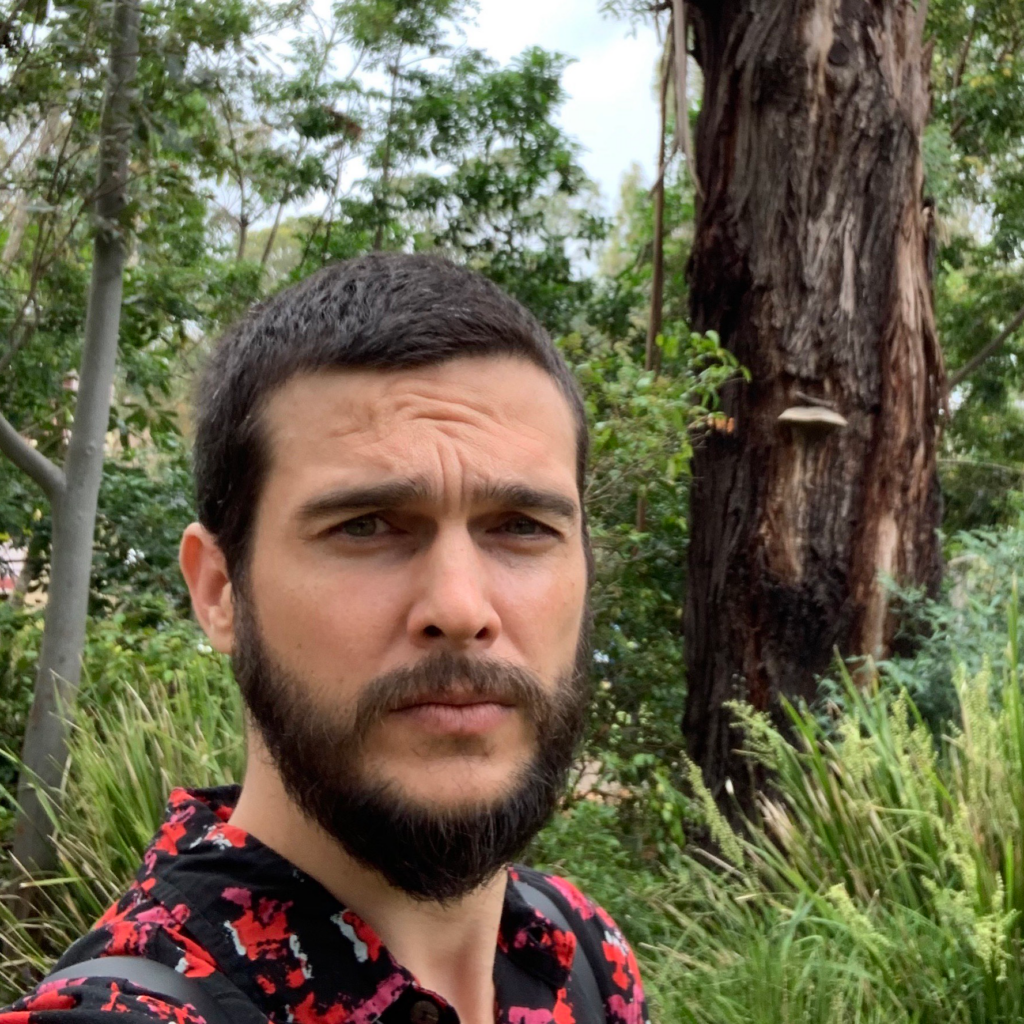In our Spotlight On series, we chat with a member of the Writing NSW community to celebrate their success and learn more about their writing practice. This month we’re pleased to speak with Gamilaroi poet, musician and educator, Luke Patterson, whose poetry has appeared in Cordite, Plumwood Mountain, Rabbit, Running Dog and The Suburban Review. Luke spoke with our Membership & Administration Officer Elliot Cameron about his writing journey.

Your poetry has been published in an impressive number of places; in print, audio and video. Do you have a different writing process for each medium, or do you write with the intention of your poetry being adaptable across all mediums?
Different mediums afford a writer different possibilities and limitations. I think of my writing practice as a series of interlocking processes made up of experiments with medium. As a kid I was obsessed with martial arts. Then as I got older that obsession turned towards music. Then it was linguistics and anthropology. They’re very different artforms expressed across their own respective mediums but over the years I got a kick out of observing and experimenting with how meaning circulates between disciplines. Process, for me, is a compound and an evolution of the known and unknown. Eventually I wound up here as a poet obsessed with this ineffable substance I hear in the storytelling of my Elders. I don’t know if should call it poetics or spirit but it exists in just about everything (not just the poem), and has the capacity to bring disparate phenomena into relation. I reckon experimenting across mediums affords a chance to heighten the perceptibility of poetics/spirit.
Your piece ‘Illawarra Wandering’ (Running Dog, 2022) feels like a multimedia experience targeting multiple senses, rather than a poem to read or hear. What was it like to compose this, and do you see yourself continuing to use technology this way in your writing?
‘Illawarra Wandering’ was both a joy and pain to compose. I’ve only become interested in sound sampling, sound manipulation and coding over the last couple of years. I’ve not created a sound filing system to accommodate the new hobby. I’ve convinced myself that’s ok because it partly reflects the poetic intent of cacophony. The printed/animated aspect of the poem is made of an entanglement of poetic fragments and reflections walking on Tharawal land. I then embedded another layer of sensory experience with audio recordings altered by guitar pedals. I was having fun exploring timbre, texture, context, erasure and presence. The poem isn’t accessible all at once. It changes and finds its own patterns and threads. I tried to create a poem with its own self-regulating semantic ecology. I wanted it to fluctuate and move like Country.
Earlier this year your writing was included in Nangamay Mana Djurali: First Nations Australia LGBTQIA+ Poetry, published by BLACKBOOKS. Can you tell us a bit about the piece you wrote for this, and what it means to be part of an anthology dedicated to First Nations LGBTQIA+ poetry?
It’s a love poem called ‘A Grass Tree By Any Other Name’. It’s a little bit cheeky but mostly about finding a moment of peace while watching a partner water the garden. It’s also about Blak love and those fleeting moments of deep connection where you almost forget the colony. I’m proud to be a part of the anthology because front to cover it’s a love poem to our communities. I’ve had a couple of opportunities to read with the other authors and it’s a reminder why I do what I do. This anthology is an act of Blak Joy.
You’re currently the Creative Producer for First Nations and Community at Word Travels. As a poet pushing the artform forward, what would you like to see for spoken word poetry in NSW?
Which Australian poets have had the biggest influence on the way you write, and which are you currently most excited by?
As I’ve mentioned Elders tell the best yarns and their poetic spark of creation and the way they connect language and place is always a massive influence on me. Otherwise, Evelyn Araluen, Jazz Money and Alison Whitaker have all been significant in my poetic development. Often I feel like I’m writing in conversation with them. A poet I’m excited about is Bundjalung-Gumbayngirr man, Dakota Feirer. His writing has a cultural-grounding that brings poems on a page to life.
Luke Patterson is a Gamilaroi poet, musician and educator living on Gadigal lands. His poetry has appeared in Cordite Poetry Review, Plumwood Mountain, Rabbit, Running Dog and The Suburban Review. He has also featured in the anthologies Active Aesthetics, Firefront: first nation’s poetry and power today, Best of Australian Poems 2021 and Nangamay Mana Djurali: First Nations LGBTQI+ Poetry. Luke has guest edited for Cordite Poetry Review and currently is an editor at Sunder, a poetry journal for disabled, D/deaf and chronically ill creators. Luke’s research and creative pursuits are grounded in extensive work with First Nations and other community-based organisations across Australia.
Here’s where you can read more Spotlight On.
